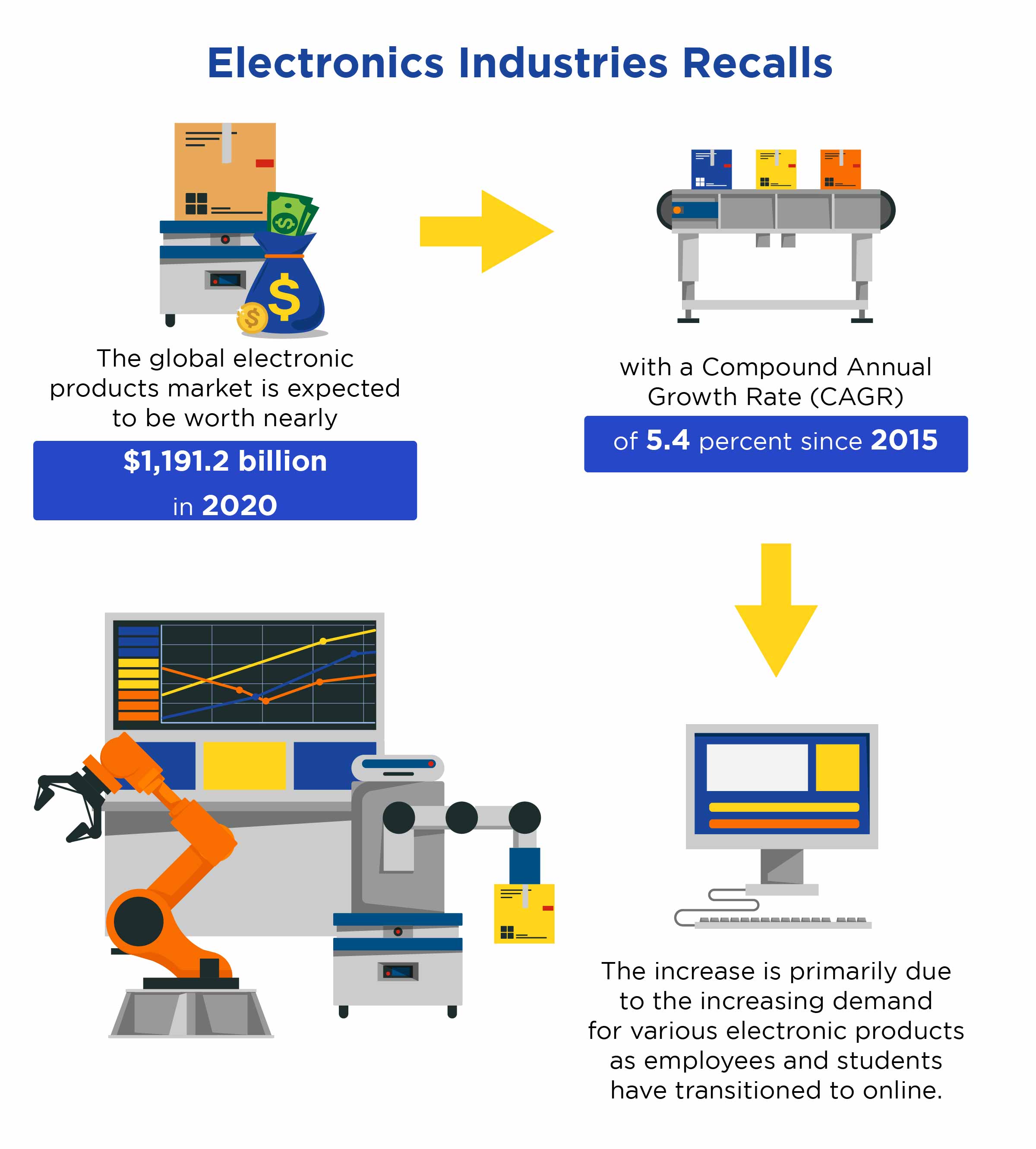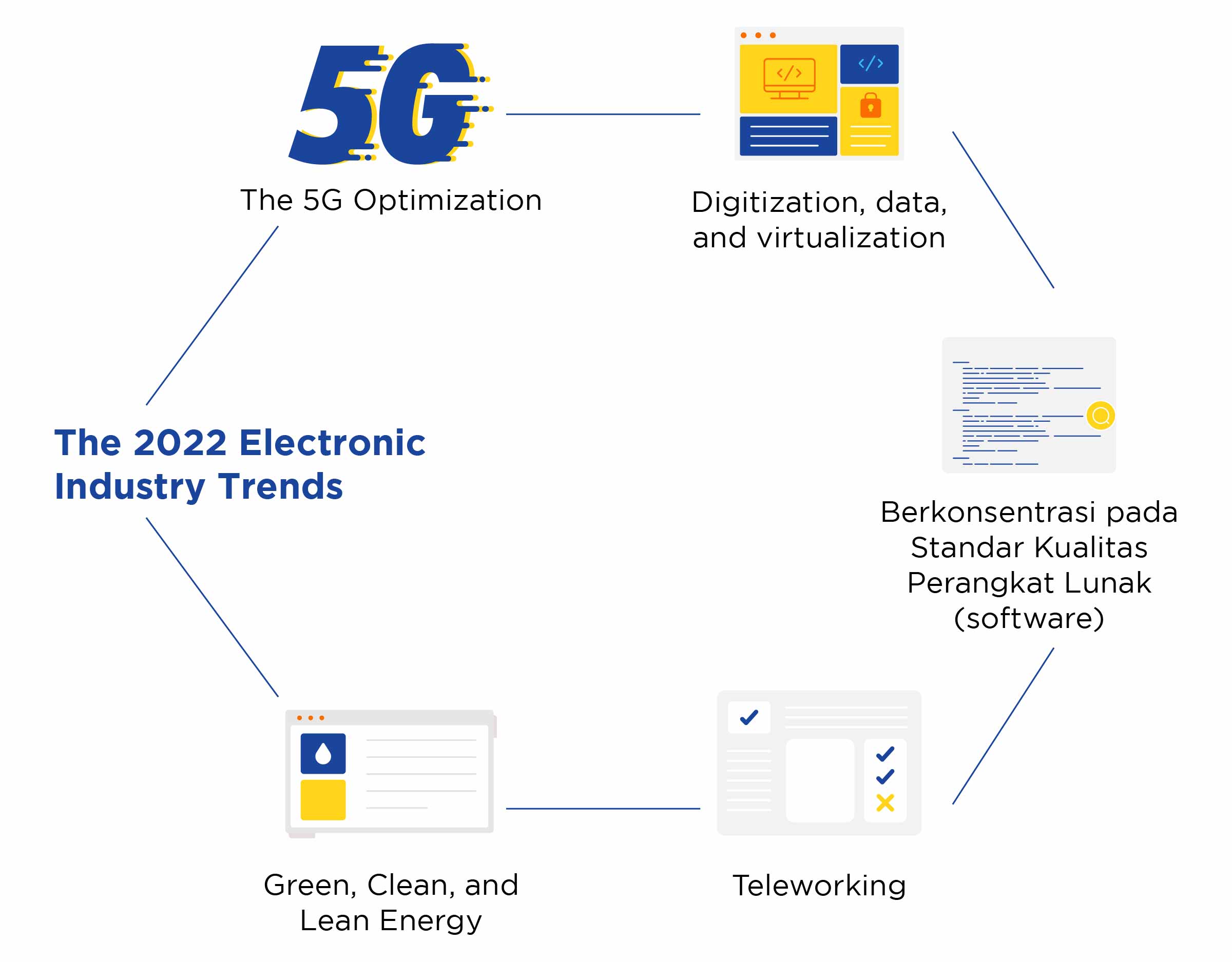The Covid-19 pandemic will continue to have a wide-ranging impact on our lives in 2022. This implies that the digitization and virtualization of business and society will continue at an accelerated pace.
The electronics sector appears to be overgrowing, owing to increased demand from developing countries. Before the virus outbreak, due to increased demand, electronics production skyrocketed, accompanied by a surge in investment.
The global electronic products market is expected to be worth nearly $1,191.2 billion in 2020, with a Compound Annual Growth Rate (CAGR) of 5.4 percent since 2015. The increase is primarily due to the increasing demand for various electronic products as employees and students have transitioned to online.
As we enter a new year, the need for sustainability, ever-increasing data volumes, and increasing compute and network speeds will reclaim their position as the primary drivers of digital transformation.
Is the Electronic Industry Growing During Challenging Situations?

A report showed that the global Covid-19 pandemic affects the electronic products market in the short term and will likely continue to do so in the medium term before the market recovers. The coronavirus has significantly impacted countries heavily involved in designing and manufacturing electronic products, particularly China, resulting in numerous supply chain issues.
Manufacturing capacity will return as economies around the world begin to reopen. Still, consumer confidence will likely take longer to recover – influencing the market, particularly at the premium end.
The global electronic products market is expected to grow at a compound annual growth rate (CAGR) of 11.2 percent, from $948.78 billion in 2020 to $1055.29 billion in 2021.
The increase is primarily due to companies reorganizing their operations and recovering from the Covid-19 impact, which had previously resulted in restrictive containment measures such as social distancing, remote working, and the closure of commercial activities, resulting in operational challenges.
Challenges in The Electronic Industry
Regardless of its merits, the electronic industry faces disruptive forces that will test its business model and ability to survive and thrive.
The global electronic industries are the fastest-growing sector, worth trillions of dollars, and play a critical role in driving consumers to purchase innovative and smart electronic products. The global market for electronic components is expected to grow at a compound annual growth rate (CAGR) of about 4.8 percent from 2020 to 2025.
Electronic industries have always been at the forefront of the most recent technological innovations to reduce costs and improve efficiency with such a large future market potential. Many SMEs have found it challenging to keep up with the trends/changes as technology has advanced faster.
For example, top players such as Apple, Samsung, Microsoft, and Intel, to name a few, are investing heavily in new cutting-edge technology to expand their technological capabilities and remain competitive. They are the leading example of an IR4.0 (industrial Revolution 4.0) Eco-friendly system.
The integration of digital tools and technologies has increased revenue and productivity, improved product quality, reduced waste, and operational costs, and met the most recent customer/global demands.

The 2022 Electronic Industry Trends
The most important lesson of the last two years for many individuals and organizations has been that truly transformative change isn't as difficult to implement as once thought, if the motivation is there! We will undoubtedly continue to harness this newfound openness to flexibility, agility, and innovative thinking as the emphasis shifts from merely surviving in a changing world to thriving in it.
Here are some predictions for the specific trends that are likely to have the most significant impact in 2022. The most important trends in 2022 will likely focus on the convergence of technology trends as tools emerge that let us combine them in new and amazing ways.
- The 5G Optimization
5G is laying the groundwork for a fully digitalized and connected world. We have seen many new field trials and an increasing number of commercial rollouts over the last two years. Furthermore, we are seeing 5G being adopted in various industries, ranging from manufacturing to healthcare.
With its high output and ultralow latency, 5G can access many high-value areas such as 3D robotic control, virtual reality monitoring, and remote medical control that previous technologies could not. 5G is redefining and accelerating industries like automotive, entertainment, computing, and manufacturing. It will eventually change the way we work and live. - Digitization, data, and virtualization
Many of us witnessed the virtualization of our offices and workplaces in 2020 and 2021, as remote working arrangements were quickly implemented. This was simply a crisis-driven acceleration of a much longer-term trend. In 2022, we'll be more familiar with the concept of a "metaverse" – persistent digital worlds that exist alongside the physical world we live in.
As digitization accelerates, these metaverses will more accurately model and simulate the real world, allowing us to have more immersive, convincing, and ultimately valuable experiences within the digital realm. As a digital loyalty and retention platform, TADA can help business owners to migrate to digital businesses to optimize sales. Therefore, the business continues to run in line with the trends and developments of existing technology. - Concentrate on Software Quality Standards
The focus on quality will be the trend for 2022 and beyond. Software solutions will be integrated into our daily lives and the majority of the goods and appliances we use. As a result, software must meet the quality standards of the manufacturing industry. - Teleworking
Teleworking will continue to grow in 2022, bringing advances in software development. Companies worldwide will need to support hybrid forms of team management and collaboration to increase the productivity of their workforces. As the trend of conducting online meetings and video sales calls continues, this new standard will grow even more in 2022. - Green, Clean, and Lean Energy
Renewable energy was the only type of energy that saw an increase in use during the pandemic. As industries shut down and people stayed at home, global nonrenewable energy consumption decreased, resulting in an 8% reduction in emissions. As a result, increased investment in renewable energy generation is expected in the coming years.
According to the International Energy Agency (IEA), 40% more renewable energy was generated and used in 2020 than the previous year. This trend is expected to continue through 2022. Overall, the cost of generating renewable energy from various sources, such as onshore and offshore wind, solar, and tidal, has decreased by 7 to 16%. This will be highly beneficial to countries and businesses attempting to meet emissions targets such as becoming carbon neutral or even carbon negative.

Final Takeaway
Change is unavoidable. Either adapt or risk being left out of the competition. To meet customer and global demands, one must be agile and quick to adapt modern and innovative technologies, which are critical for every electronics industry sector. Furthermore, the most important trends in 2022 are likely to focus around the convergence of technology trends, as tools emerge that let us combine them in new and amazing ways.
TADA assisted many businesses in creating the most suitable software and applications that answer their specific needs. Let us help you decide the right strategy and initiatives to help you thrive in responding to today's digitization challenges. Request Demo Now!



.png)
